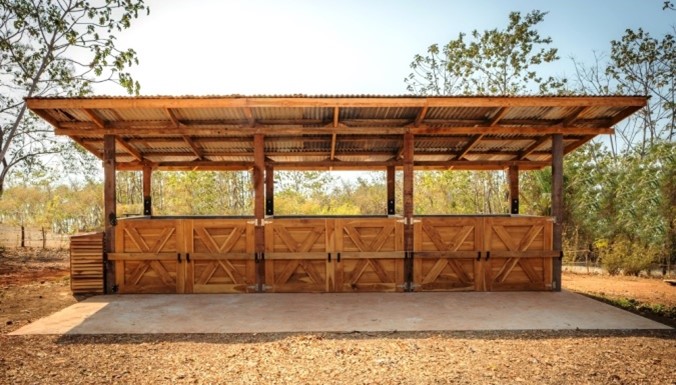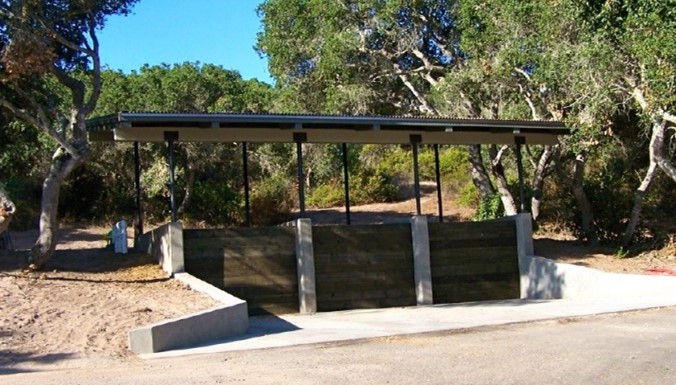Designing an Appropriately-Sized O2Compost System
The first step in designing a new O2Compost System is to estimate the volume of manure and stall bedding that is generated on roughly a monthly basis. A recent client referred to this as doing the “Manure Math” which I thought had a great ring to it. This is how I do it ...
Number of Horses
Clearly, the number of horses that are on a farm is of key importance. The rule of thumb that we use has proven to be quite reliable: 1 average size horse (1,100 to 1,200 pounds) generates about 1 cubic yard of manure per month. It stands to reason that larger horses generate somewhat more and ponies and minis produce less.
Type and Amount of Stall Bedding
We need to add the amount of stall bedding that is generated to the manure volume and this depends on the type of stall bedding and the depth in the stall. Shavings add considerable volume whereas wood pellets add less. Also, some horse owners feel that the horses do better on deep bedding while others “bank it” along one side of the stall.
Time on Pasture and Whether the Pastures are Picked
If the horses on are on pasture 12 hours a day and they are in stalls 12 hours a day, and the pastures are not picked, there is less waste to consider. If the pastures are picked, there is typically no stall bedding in this collected manure.
In her book, “The Perfect Horsekeeper”, Karen Hayes, DVM strongly recommends picking the manure from the pasture but this does take a fair amount of time that is not always available.
The Bin Volume
The calculated volume of a bin is determined by multiplying the width (in feet) by the depth and the wall height. For example, a bin that measures 8 feet wide and 8 feet deep with a wall height of 4 feet will have a volume of 8’ x 8 ’x 4’ = 384 cubic feet. There are 27 cubic feet in one cubic yard (i.e., 3’ x 3’ x 3’) and therefore the equivalent bin volume is about 10 cubic yards.
Consolidation in the Bin
When the manure is wetted down so that it has a moisture content of 60% to 65% (strongly recommended), it becomes heavier than when it is removed from the stall, and as the bin is being filled the newly added manure compacts the underlying manure. As a result, 12 to 14 cubic yards of loose manure may actually fit in a 10 cubic yard bin.
Number of Bins
Most O2Compost Systems include at least three bins: one being filled, one in the active composting phase, and one in the curing phase. However, some people prefer to have added capacity (especially in cold, northern climates) resulting in a four or five-bin system.
Let’s “Run the Numbers”
As an example, let’s assume a given farm has 6 horses and that they use wood pellets for their stall bedding Let’s also assume that the horses spend most of the time in their stalls during the winter months (the design condition). The volume of manure would be ~6 cubic yards plus ~4-6 cubic yards of bedding or a maximum of 12 cubic yards total (loose volume).
For this situation, I would recommend a three-bin system with each bin measuring 8-feet by 8-feet by 4-feet.
Safety Factor
If, for some reason, the farm generates more waste volume, we have three options available to us:
First, we can raise the wall height to 6 feet by adding lumber planks to the top of the wall and increase the bin volume by 50%. In the example above, the volume of the bin can be increased from 14 cubic yards to about 20 cubic yards and accommodate perhaps 24 cubic yards of loose manure.
Second, we can “push” the manure through the process in less time, say in 3 weeks instead of 4 weeks. Since we will be destroying pathogens, parasites, weed seeds and fly larvae in 3 days (with pile temperatures exceeding 131oF) we will not be compromising the quality of the finished compost by shortening the Active Phase by a week.
Third, we can raise the wall height and hasten the composting process as described above.
The Resulting Compost System Size
For this example the roof drip-line of the Compost Structure would measure about 20 feet long and 12-feet wide (front to back) and it might look like the following two examples:

Three Bin, On-Grade System with Lumber
|

Three Bin, Top-Down System with Concrete
|